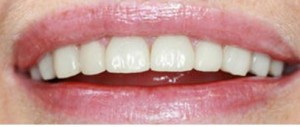Ultra-thin veneers

Ultra-thin veneers (ultranirs) are innovative ultrathin overlays which are expanded on tooth enamel.
This is the latest development in the field of aesthetic dentistry, which allows high-quality and in a short time to carry out restoration of teeth.
Ultranirs have a great resemblance to lumineers, but in contrast to them are more perfect.
Lining is made of special dental ceramics.
When installing an ultra-thin plate, the thickness of which is only 0.2 - 0.3 mm, tooth turning is not required.
They are attached to the teeth using a special mixture based on dental cement.
Benefits
- When installing ultra-thin veneers, preliminary preparation of the tooth for fixing the lining is not required.
- Ultranirs are an excellent alternative to the tedious and destructive tooth enamel whitening.
- Ultra-thin plates protect tooth enamel from the harmful effects of the external environment, and the pad itself remains unchanged in its original state.
- The color and shape of the pads can be matched to natural teeth in such a way that no one will notice the presence of ultra-teeth on the teeth.
- Despite the fact that the pad is quite thin, its strength is much higher than that of veneers. The material used for the manufacture of ultranirs is characterized by increased strength, and therefore, the linings are able to withstand more pressure than veneers.
- Ultranirs are made in Russia, which favorably affects the reduction in the production and delivery time of linings.
- The cost of such plates is lower in comparison with lumineers.
- The procedure is completely painless. There is no need to anesthetize and make temporary pads.
- The process of tooth restoration with ultra-nirs is reversible and has no negative consequences.
- Excellent aesthetic performance.
- The process of tooth restoration with ultra-thin veneers takes less time compared to installing conventional veneers.
- The manufacture of pads is made individually for each patient.
disadvantages
- Ultranirs cannot solve all the problems associated with tooth defects.
- The pads cannot restore the esthetics of the teeth in the presence of serious chipped teeth, pronounced curvatures of the teeth and dentition, and shortening of the crown of the tooth.
- Fairly high cost of ultranirs.
Indications

Ultra-thin pads are recommended for people who have the following problems:
- The presence of significant interdental spaces.
- If there are cracks or chips on the enamel.
- Change the color of tooth enamel.
- Correction of tooth shape.
- Tooth abrasion.
Contraindications
Installation of ultra-thin veneers is contraindicated in the following cases:
- Poor oral hygiene.
- The presence of chronic inflammatory processes in the oral cavity.
- With orthodontic problems.
- If you have severe gum disease.
How to install
In order to clean your teeth, just two visits to the dentist.
- At the first visit, the doctor will conduct a complete examination and analysis of the bite, as well as take casts.
- During the second visit - will fix the plates on the teeth.
Cost
The high cost of ultra-thin plates is justified by their ease of installation and reliable restoration.
| Ultra-thin veneers | Price (rub.) |
| Ultranir Enamik (Vita, Germany) | 25000 |
| Ultra-thin e-max veneer | 25000 |
| Ultranir (lumineer) Cerinat (USA) | from 30000 |
Photo: before and after
 |
 |
 |
 |
 |
 |
 |
 |
 |
 |